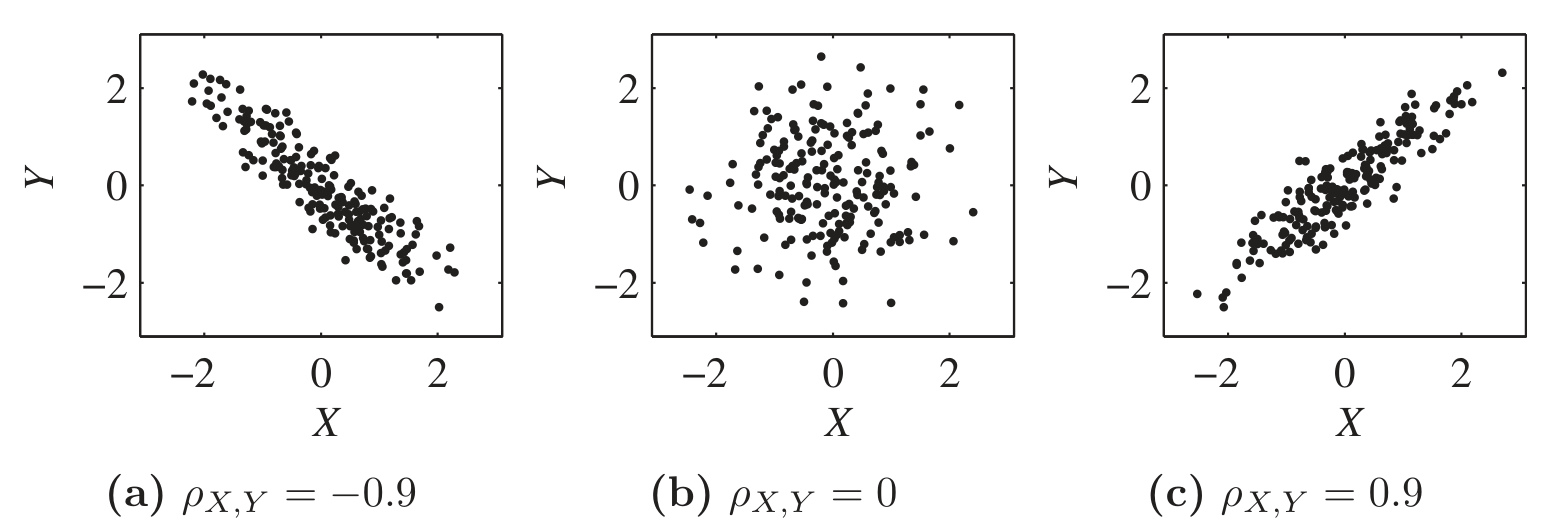Expectation for two variables
01 Theory
Expectation for a function on two variables
Discrete case:
Continuous case:
These formulas are not trivial to prove, and we omit the proofs. (Recall the technical nature of the proof we gave for
Expectation sum rule
Suppose
and are any two random variables on the same probability model. Then:
We already know that expectation is linear in a single variable:
Therefore this two-variable formula implies:
Expectation product rule: independence
Suppose that
and are independent. Then we have:
Extra - Proof: Expectation sum rule, continuous case
Suppose
and give marginal PDFs for and , and gives their joint PDF. Then:
Observe that this calculation relies on the formula for
, specifically with .
Extra - Proof: Expectation product rule
02 Illustration
from joint PMF chart
Exercise - Understanding expectation for two variables
Suppose you know only that
and . Which of the following can you calculate?
two ways, and , from joint density
Covariance and correlation
03 Theory
Write
Observe that the random variables
Covariance
Suppose
and are any two random variables on a probability model. The covariance of and measures the typical synchronous deviation of and from their respective means. Then the defining formula for covariance of
and is: There is also a shorter formula:
To derive the shorter formula, first expand the product
Notice that covariance is always symmetric:
The self covariance equals the variance:
The sign of
| Correlation | Sign |
|---|---|
| Positively correlated | |
| Negatively correlated | |
| Uncorrelated |
Correlation coefficient
Suppose
and are any two random variables on a probability model. Their correlation coefficient is a rescaled version of covariance that measures the synchronicity of deviations:
The rescaling ensures:

Covariance depends on the separate variances of
Correlation coefficient, because we have divided out
04 Illustration
Covariance from PMF chart
05 Theory
Covariance bilinearity
Given any three random variables
, , and , we have:
Covariance and correlation: shift and scale
Covariance scales with each input, and ignores shifts:
Whereas shift or scale in correlation only affects the sign:
Extra - Proof of covariance bilinearity
Extra - Proof of covariance shift and scale rule
Independence implies zero covariance
Suppose that
and are any two random variables on a probability model. If
and are independent, then:
Sum rule for variance
Suppose that
and are any two random variables on a probability space. Then:
When
and are independent, the formula simplifies to:
Proof: Independence implies zero covariance
The product rule for expectation, since
and are independent: The shorter formula for covariance:
But
, so those terms cancel and .
Proof: Sum rule for variance
Proof that
- Create standardizations:
- Now
and satisfy and . - Observe that
for any . Variance can’t be negative. - Apply the variance sum rule.
- Apply to
and : - Simplify:
- Notice effect of standardization:
- Therefore
. - Modify and reapply variance sum rule.
- Change to
: - Simplify:
06 Illustration
Exercise - Covariance rules
Simplify:
Exercise - Independent variables are uncorrelated
Let
be given with possible values and PMF given uniformly by for all three possible . Let . Show that
and are dependent but uncorrelated. Hint: To speed the calculation, notice that
.
Variance of sum of indicators